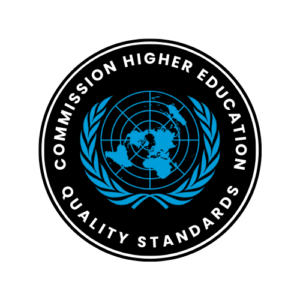We accredit Training, Business School Programs, e-Learning, and MOOCs Massive Online Open Courses who have agreed to adhere to quality standards as itemized in the US Department of Education and The State and Local Authorities.
The process used by the Board of Standards and the CHEQS to accredit programs, courses and training is based on an international business accreditation standards of the: ISO, ESQ, TUV ACBSP, EFMD, EQUIS, IACBE, AACSB and the ABA American Bar Association.
This CHEQS International Board of Standards is an ISO Sanctioned 29993, 9001, and 21001 Company and International Board of Standards which owns over 100 certification programs and curriculum guides that can be used jointly with training and education providers.
ISO 29993 Standards is for Learning Service Providers offering Qualifications and Charter Designations. A program that has been approved for our programs of ISO 29990 non formal training certification meets the CHEQS accreditation standards.
The CHEQS Accreditation process includes evaluation of government approved programs, licensing, and existing accreditation.
All CHEQS accredited bodies must offer comprehensive assessment of individuals within the course or courses. These courses should be either from a government recognized body, accredited business school, government recognized licensing agency, or from a qualified training program.
Accreditation in the U.S
The United States has no Federal Ministry of Education or other centralized authority exercising single national control over postsecondary educational institutions in this country. The States assume varying degrees of control over education, but, in general, institutions of higher education are permitted to operate with considerable independence and autonomy. As a consequence, American educational institutions can vary widely in the character and quality of their programs. Many educational bodies are no longer demanding students take a diploma or degree but rather encouraging students to take up courses, skills, specializations and certifications.
In order to insure a basic level of quality, the practice of accreditation arose in the United States as a means of conducting non-governmental, peer evaluation of educational institutions and programs. Private educational associations of regional or national scope have adopted criteria reflecting the qualities of a sound educational program and have developed procedures for evaluating institutions or programs to determine whether or not they are operating at basic levels of quality
Some Functions of Accreditation and Quality Standards
- Verifying that an institution or program meets established standards;
- Assisting prospective students in identifying acceptable institutions;
- Assisting institutions in determining the acceptability of transfer credits;
- Helping to identify institutions and programs for the investment of public and private funds;
- Protecting an institution against harmful internal and external pressure;
- Creating goals for self-improvement of weaker programs and stimulating a general raising of standards among educational institutions;
- Involving the faculty and staff comprehensively in institutional evaluation and planning;
- Establishing criteria for professional certification and licensure and for upgrading courses offering such preparation; and
- Providing one of several considerations used as a basis for determining eligibility for Federal assistance.
The Accrediting Procedure
- Standards: The accrediting agency, in collaboration with educational institutions, establishes standards.
- Self-study: The institution or program seeking accreditation prepares an in-depth self-evaluation study that measures its performance against the standards established by the accrediting agency.
- On-site Evaluation: A team selected by the accrediting agency visits the institution or program to determine first-hand if the applicant meets the established standards.
- Publication: Upon being satisfied that the applicant meets its standards, the accrediting agency grants accreditation or preaccreditation status and lists the institution or program in an official publication with other similarly accredited or preaccredited institutions or programs.
- Monitoring: The accrediting agency monitors each accredited institution or program throughout the period of accreditation granted to verify that it continues to meet the agency’s standards.
- Reevaluation: The accrediting agency periodically reevaluates each institution or program that it lists to ascertain whether continuation of its accredited or preaccredited status is warranted.
Source: United States Government Standards Department of Education Accreditation in the U.S.

